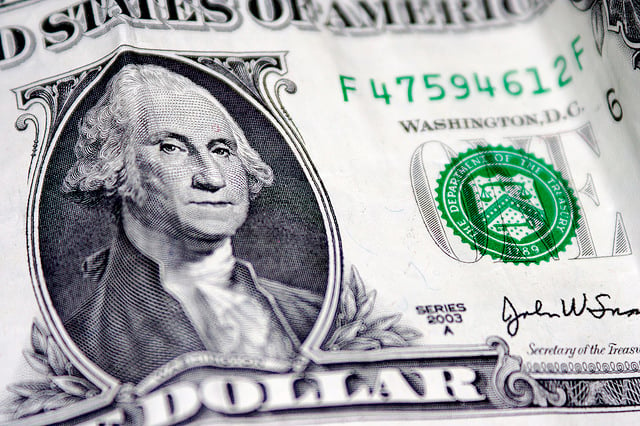It’s common knowledge now that lead is a systemic poison. Overexposure to it can damage our blood-forming, nervous, urinary and reproductive systems. In the past, lead was commonly added to industrial paints because of its characteristic corrosion resistance and color enhancement. Lead Poisoning Prevention Week takes place from October 20–26. Sponsored by the US Environmental Protection Agency (EPA), this year’s event focuses on protecting children from exposure to lead. EPA and partner agencies such as HUD are helping raise awareness among parents of ways to combat lead poisoning, from monitoring children’s consumption of certain types of imported candy to screening those most liable to be exposed to lead in the home.
Audit, Compliance and Risk Blog
Tags: Business & Legal, California Legislation, Environmental risks, Environmental, EPA
OSHA Proposes to Regulate Exposures to Respirable Crystalline Silica
Posted by Jon Elliott on Thu, Oct 17, 2013
The US Occupational Safety and Health Administration (OSHA) regulates thousands of chemicals, through a variety of regulatory standards. At the broadest level, employers must evaluate basic information about every potentially hazardous chemical, and provide information to employees in compliance with OSHA's Hazard Communication Standard. OSHA also provides somewhat-more-tailored requirements for classes of chemicals (such as flammables), and for types of activities that pose chemical hazards (such as welding). For a small number of especially hazardous chemicals, OSHA provides a detailed standard applicable to a single chemical—examples include asbestos, benzene, and lead. On September 12, 2013, OSHA published a proposal to establish just such a single chemical standard, for crystalline silica (29 CFR section 1910.1053).
Tags: Business & Legal, Health & Safety, OSHA, Environmental risks, Environmental, Hazcom, fracking, Oil & Gas
Recently, the U.S. Pipeline and Hazardous Materials Safety Administration (PHMSA) and Federal Motor Carrier Safety Administration (FMCSA) issued a new series of notices concerning hazardous materials handling and driver recordkeeping procedures. CMV drivers and transporters of hazardous materials should be alert to the following:
Tags: Business & Legal, Health & Safety, Training, Environmental risks, Hazcom, Oil & Gas
On September 20, the US Environmental Protection Agency (EPA) re-proposed regulations to regulate carbon dioxide (CO2) emissions from electricity generating units fueled by coal and natural gas. This proposal marks the latest of many ongoing steps by the Obama Administration to limit emissions of greenhouse gases (GHGs) even though Congressional deadlock means there will be no legislative initiatives until after the 2014 elections at the earliest. This proposal applies—critics say stretches—EPA's Clean Air Act (CAA) authority.
Jane Brown, an avid online shopper in New Mexico, is delighted to find just the candleholders she needs on discounted sale on LuvLee Living, a home décor website based out of New York. She orders a pair, but when the package arrives, she feels they are not as described on the website. She attempts to return them, but is told by LuvLee that sale items are “as is” and non-returnable as per their website’s terms of use. Brown protests that she did not agree to any such terms. LuvLee responds that their terms of use are posted on the site and can be viewed by clicking a link. By browsing the LuvLee Living site, the retailer contends, Brown agreed to the terms of use. Further, should Brown wish to pursue the matter, she will be bound by arbitration under New York jurisdiction, even though she resides far from New York, because such stipulation was also in the terms of use.
SEC Proposes Controversial Pay Ratio Reporting Requirements
Posted by Jon Elliott on Mon, Oct 07, 2013
On September 18 the Securities and Exchange Commission (SEC) proposed to require public companies to calculate and disclose the pay ratio between their principal executive officer (PEO) and other employees:
Tags: Corporate Governance, Business & Legal, SEC, Accounting & Tax
Insurance Archaeology: Do You Know Where Your Policies Are?
Posted by Viola Funk on Fri, Oct 04, 2013
Tags: Corporate Governance, Business & Legal, Insurance, Insurance Claims
CEO/Worker Pay Ratio—SEC Proposes Controversial and Costly Statistic
Posted by Ron Pippin on Wed, Oct 02, 2013
Tags: Corporate Governance, SEC, Accounting & Tax, Accountants
The greenhouse gas cap-and-trade program overseen by California’s Air Resources Board (ARB), which began earlier this year, not only allows for use of approved offsets to meet a portion of an entity’s emission reduction requirements. Entities will soon also be able to comply with the program by participating in its counterpart in the Canadian province of Quebec. By January 1, 2014, ARB’s cap-and-trade program will be linked with Quebec’s. A press release from ARB sums up key features of the linkage:
Tags: Health & Safety, Environmental risks, Environmental, EPA, Greenhouse Gas, ghg
Do you know what's in the chemical products you buy and use, and whether they're "safe?" Effective October 1, 2013, California regulations provide criteria and procedures for state-level identification and listing of likely-hazardous chemicals of concern. Manufacturers and importers will be required to evaluate chemicals of concern in consumer products, their potential alternatives, and how best to limit exposure or reduce hazards. Assemblers and retailers will have related responsibilities. Although these requirements apply directly only within California, any reviews and reformulations are likely to affect global production and distribution decisions.
Tags: Health & Safety, California Legislation, Environmental, EHS, EPA, Hazcom










